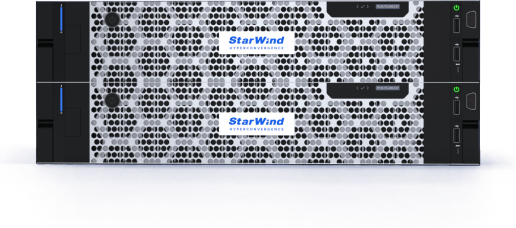The amount of information we generate and store is growing at an exponential rate. This constant growth presents significant challenges for organizations, including rising storage costs, increased infrastructure complexity, and the need for more efficient data management strategies. Data deduplication offers a powerful solution to these challenges.
In this article, we’ll explore what data deduplication is, how it works, and why it’s becoming an essential component of modern data management. Think of it as a way to declutter your digital space, making everything more organized and efficient for you.
What is data deduplication?
Data deduplication, often shortened to “dedupe”, is a specialized storage optimization technique that eliminates redundant copies of data. It identifies and removes duplicate data blocks, storing only unique data segments. These unique segments are then referenced by pointers, which replace the redundant data copies. This process significantly reduces the amount of storage space required, leading to cost savings and improved storage efficiency.
Imagine you have multiple copies of the same document scattered across your computer. Data deduplication is like finding all those copies, keeping just one, and replacing the others with shortcuts that point to the original.
This approach can dramatically reduce the overall storage footprint, especially in environments where there are many duplicate files or data blocks. For example, think about a company’s email server. Many employees might receive the same attachments, resulting in numerous identical copies being stored. Data deduplication identifies these duplicates and stores only one instance, freeing up significant storage space.
Importance in modern data management
In the era of big data, the amount of information that businesses and individuals need to store is constantly increasing. This growth puts an increasing strain on storage infrastructure, leading to higher costs and increased complexity.
Data deduplication, especially if used with other data optimization technologies (e.g. compression), helps alleviate these issues by reducing the amount of physical storage required.
Moreover, it enhances backup and disaster recovery processes by reducing the size of backup datasets, leading to faster backup and recovery times.
Operating principles of deduplication technology
Understanding how deduplication technology works under the hood is crucial to appreciating its benefits.
How deduplication works
The deduplication process generally involves several key steps.
- Analysis: Incoming data is broken into smaller blocks.
- Comparison: These blocks are compared against an index of already stored blocks.
- Pointer creation: If a match is found, a pointer to the existing block is created instead of storing a new copy.
- Unique data storage: Unique blocks are stored, and their information is added to the index.
This process can happen inline (as data is written) or post-process (after data is stored).
Original Data Pointers
Pointers are crucial. When a duplicate block is found, a pointer acts as a shortcut to the single, unique original block. This metadata, managed by the deduplication system, ensures quick and easy access to data as if the duplicates still existed.
Data deduplication strategies
There are two primary strategies for implementing data deduplication: post-processing and inline deduplication.
Post-processing deduplication
In post-processing deduplication, data is first written to the storage system and then analyzed for redundancy. The deduplication process occurs after the data has already been stored.
This approach has the advantage of minimizing the impact on write performance, as the initial write operation is not delayed by the deduplication process. However, it does mean that redundant data is temporarily stored, which can reduce the initial storage savings.
Post-processing is often used in environments where write performance is critical and initial storage capacity is less of a concern. For example, in a large file server, data can be written quickly, and then deduplicated during off-peak hours to minimize any performance impact on your users. Another scenario where post-processing shines is in archival systems where data is rarely modified after its initial creation.
Inline deduplication
Inline deduplication, on the other hand, performs the deduplication process as data is being written to the storage system. This means that redundant data is identified and eliminated before it’s stored, maximizing storage savings from the outset. However, inline deduplication can impact write performance, as the deduplication process introduces overhead.
This approach is often used in environments where storage capacity is a primary concern and some performance impact is acceptable. For you, this might mean slightly slower write speeds, but significantly more efficient use of your storage space, especially if you have a lot of redundant data.
It’s a trade-off between speed and efficiency that you need to consider. For instance, in virtual desktop infrastructure (VDI) environments, inline deduplication is highly beneficial because many virtual machines share the same base image, resulting in significant redundancy. By deduplicating data inline, storage capacity is optimized from the start, reducing the overall storage footprint required for the VDI deployment.
Here is a short comparison table:
| Feature | Post-Processing Deduplication | Inline Deduplication |
|---|---|---|
| Timing | After data is written | As data is being written |
| Write Performance | Minimal impact, as writing isn’t delayed | Can impact write performance due to processing overhead |
| Initial Storage Savings | Lower, as duplicates are temporarily stored | Higher, as duplicates are prevented from being stored |
| Best For | Environments prioritizing write speed, archival systems | Environments prioritizing storage capacity, VDI |
| Example | Large file servers (deduplication during off-peak) | Virtual Desktop Infrastructure (VDI) |
Challenges and considerations in data deduplication
While data deduplication offers numerous benefits, it also presents certain challenges and considerations.
Potential downsides
One potential downside of data deduplication is the impact on performance. The deduplication process can introduce overhead, especially with inline deduplication, which can slow down write speeds. Additionally, retrieving deduplicated data requires the system to reassemble the original data blocks, which can add latency. It’s important to carefully evaluate the performance impact and ensure that the deduplication solution is optimized for your specific environment.
Another consideration is the need for sufficient processing power and memory to handle the deduplication process. For you, this means that you might need to invest in more powerful hardware to ensure that your deduplication solution doesn’t negatively impact your system’s performance. It’s a balancing act between storage savings and performance impact.
Key considerations
When implementing a data deduplication solution, there are three key considerations to keep in mind.
- First, you need to carefully analyze your data to determine the potential for deduplication. The more redundant data you have, the greater the benefits of deduplication will be.
- Second, you need to choose the right deduplication strategy (inline or post-processing) based on your performance and storage requirements. Third, you need to ensure that your system has sufficient processing power and memory to handle the deduplication process.
- Finally, you need to monitor the performance of your deduplication solution and make adjustments as needed. For you, this means doing your homework, understanding your data, and choosing a solution that fits your specific needs. It’s not a one-size-fits-all feature, so careful planning is obligatory.
Embracing deduplication for future storage needs
Looking ahead, data deduplication will continue to evolve and adapt to the changing landscape of data management. New techniques and technologies will further improve the efficiency and performance of deduplication solutions. Integration with emerging technologies, such as artificial intelligence and machine learning, will enable more intelligent and automated data management, predicting redundancy patterns and optimizing deduplication processes in real-time.
As data volumes continue to explode, embracing deduplication will be crucial for organizations to manage their data effectively and efficiently. For you, this means staying informed about the latest developments in deduplication technology and being prepared to adapt your data management strategies as needed. Less is truly more when it comes to data storage, and deduplication is the key to unlocking that potential.


